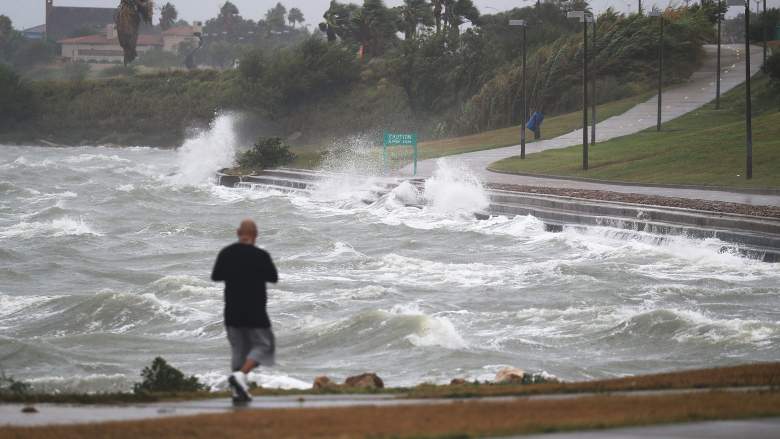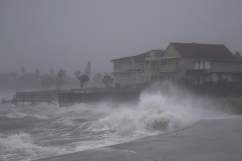
Hurricane Harvey, which has already reached a Category 4, is expected to make landfall in Texas on Friday night or early Saturday morning, forcing thousands to evacuate from their homes with the anticipation of up to twelve foot surges. The last hurricane to make landfall in the state was Hurricane Ike in 2008.
“Harvey is a very dangerous hurricane with extreme winds, storm surge, and rainfall,” Weather Underground reported. “If you live in Texas, please heed the advice of local emergency management officials, and get out immediately if you live in an evacuation zone.”
The weather station warned of a storm surge that will reach six to twelve feet. As of Friday at 9 a.m. CDT, two foot surges were already observed along the Texas coast.
The latest storm surge forecasts, as reported by the National Hurricane Center, can be seen below. “Peak surge will occur along along parts of the Texas coast tonight into early Saturday morning with Harvey’s landfall,” weather.com stated. “Note that these inundations above ground level are worst-case scenarios along the immediate coast if the peak surge coincides with high tide.”
Port Aransas to Port O’Connor: 9 to 13 feet
Elsewhere from the north entrance of Padre Island Nat’l Seashore to Sargent, Texas: 6 to 12 feet
Sargent to Jamaica Beach, Texas: 5 to 8 feet
Port Mansfield to the north entrance of Padre Island Nat’l Seashore, Texas: 3 to 5 feet
Jamaica Beach to High Island, Texas: 2 to 4 feet
Mouth of the Rio Grande River to Port Mansfield, Texas: 1 to 3 feet
High Island, Texas, to Morgan City, Louisiana: 1 to 3 feet
According to the National Oceanic and Atmospheric Administration (NOAA), a “storm surge” is defined as the following:
Storm surge is the abnormal rise in seawater level during a storm, measured as the height of the water above the normal predicted astronomical tide. The surge is caused primarily by a storm’s winds pushing water onshore. The amplitude of the storm surge at any given location depends on the orientation of the coast line with the storm track; the intensity, size, and speed of the storm; and the local bathymetry.
Hurricane Harvey is expected to incorporate massive amounts of rain. The storm could cause as many as 35 inches of rainfall in some areas, while many will get more than a foot, according to the National Hurricane Center. Harvey is currently a Category 2 storm, with “maximum sustained winds of 100 mph,” the National Weather Service reported.
Click the following link for information on how to obtain last-minute supplies:

